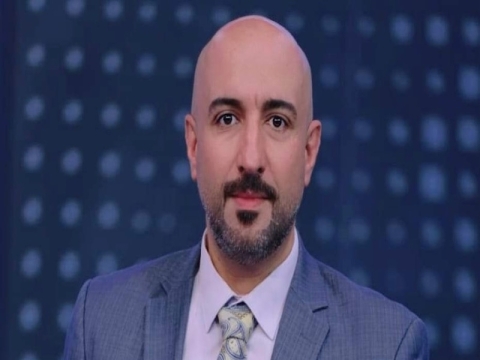Politics
The Hidden Truths of Natural Gas in Iraq
Politics

Article cover
USPA NEWS -
For years, successive Iraqi governments have focused heavily on developing the oil sector, while neglecting natural gas despite its strategic importance. This neglect has created a deep imbalance in Iraq’s economic structure, with oil revenues accounting for more than 90% of the state's income, compared to less than 10% from non-oil sources—a fundamentally unstable equation that should have been addressed with serious reform plans since 2003.
In 2020, Prime Minister Mustafa al-Kadhimi’s government launched the “White Paper,” a promising economic reform plan backed by broad technical and financial support. However, the plan did not have enough time to be implemented. With the arrival of Prime Minister Mohammed Shia' al-Sudani’s administration, the White Paper was abandoned in favor of a governmental agenda that aims to reduce oil dependence from 90% to 80%. But this shift falls short of a genuine transformation away from rentier economic thinking.
Efforts to boost oil production will not deliver the desired reform, especially given Iraq's commitments to OPEC and OPEC+, which currently cap production at 3.3 million barrels per day—potentially rising to 3.5 million in the best scenarios. Even increased output won’t be enough if prices fall, as they did last March when oil dropped to around $60 per barrel—well below the budgeted price of $70.
Efforts to boost oil production will not deliver the desired reform, especially given Iraq's commitments to OPEC and OPEC+, which currently cap production at 3.3 million barrels per day—potentially rising to 3.5 million in the best scenarios. Even increased output won’t be enough if prices fall, as they did last March when oil dropped to around $60 per barrel—well below the budgeted price of $70.
In this context, natural gas presents a golden opportunity. Iraq holds an immense reserve of 127 trillion cubic feet, enough to last more than a century, according to an official statement from the Ministry of Oil in February. Yet the country continues to import about 50 million cubic meters of gas daily from Iran, along with electricity, at an annual cost of $7–8 billion.
A new five-year contract signed with Iran in 2024 obliges Iraq to continue purchases even if it achieves self-sufficiency before the term ends. Worse still, Iraq pays prices up to three times the global average, while Iran frequently fails to deliver full quantities—as seen when supplies were slashed to 20 million cubic meters without prior notice.
A new five-year contract signed with Iran in 2024 obliges Iraq to continue purchases even if it achieves self-sufficiency before the term ends. Worse still, Iraq pays prices up to three times the global average, while Iran frequently fails to deliver full quantities—as seen when supplies were slashed to 20 million cubic meters without prior notice.
The crisis is not just financial—it escalates with supply disruptions. When gas imports are cut, as they were for 40 days earlier this year, Iraq loses between 7,000 and 8,000 megawatts of electricity. The current shortfall exceeds 28,000 megawatts. The electricity minister recently revealed that maximum generating capacity stands at 27,000 megawatts, while peak summer demand may exceed 55,000—foreshadowing a harsh summer.
Ironically, Baghdad previously refused to buy gas from the Kurdistan Region—specifically from the Sulaymaniyah fields—on political grounds. Now, with Iranian supplies dwindling, the federal government has agreed to purchase 100 million cubic feet per day from the region. This is an implicit admission that the Kurdistan Regional Government succeeded where the federal government failed, despite having fewer resources.
Even more striking is the Ministry of Oil’s desire to pay far less for Kurdish gas than it does for Iranian imports—despite the latter coming from a foreign state and costing three times more. This contradiction exposes a fundamental flaw in Iraq’s energy policy.
Ironically, Baghdad previously refused to buy gas from the Kurdistan Region—specifically from the Sulaymaniyah fields—on political grounds. Now, with Iranian supplies dwindling, the federal government has agreed to purchase 100 million cubic feet per day from the region. This is an implicit admission that the Kurdistan Regional Government succeeded where the federal government failed, despite having fewer resources.
Even more striking is the Ministry of Oil’s desire to pay far less for Kurdish gas than it does for Iranian imports—despite the latter coming from a foreign state and costing three times more. This contradiction exposes a fundamental flaw in Iraq’s energy policy.
Iraq possesses two types of gas: associated gas, much of which is flared and wasted at oil fields, and free gas found in independent fields such as Akkas in Anbar, Mansuriyah in Diyala, and Siba in Basra. However, the Ministry of Oil has delayed developing these fields, often for reasons that appear political or influenced by external agendas.
For example, the Akkas field was awarded to non-specialized companies, including a Ukrainian firm whose owner was later revealed to run a beauty salon. Previously, the field had been offered to Saudi Aramco—one of the world’s energy giants—but the proposal was seemingly sidelined, perhaps due to concerns about disapproval from “the eastern neighbor.”
The same story applies to the Mansuriyah field, which was recently awarded to an Asian company amid doubts over the seriousness of the project, given foreign pressures aimed at keeping Iraq dependent in the gas sector.
For example, the Akkas field was awarded to non-specialized companies, including a Ukrainian firm whose owner was later revealed to run a beauty salon. Previously, the field had been offered to Saudi Aramco—one of the world’s energy giants—but the proposal was seemingly sidelined, perhaps due to concerns about disapproval from “the eastern neighbor.”
The same story applies to the Mansuriyah field, which was recently awarded to an Asian company amid doubts over the seriousness of the project, given foreign pressures aimed at keeping Iraq dependent in the gas sector.
The only contract that appears to be progressing is the one with France’s TotalEnergies, which includes gas investment, oil production enhancement, water desalination, and the development of a 1,000-megawatt solar power plant. The company has now begun operations after a two-year delay, with co-financing from Qatar—a close ally of Iran—which may explain the absence of the usual obstacles.
Even the Kurdistan Region’s gas success has not been immune to interference. The Khor Mor field, which produces more than 500 million cubic feet daily, was targeted with rocket and drone attacks just days after expansion plans were announced. The message was clear: “Natural gas is a red line.”
Iran’s influence has diminished in Syria, Lebanon, and Yemen—but Iraq remains a critical stronghold. With Tehran’s political and military leverage weakening inside Iraq, a rare opportunity now exists for Baghdad to reclaim sovereignty over its gas file and end years of energy dependence.
Even the Kurdistan Region’s gas success has not been immune to interference. The Khor Mor field, which produces more than 500 million cubic feet daily, was targeted with rocket and drone attacks just days after expansion plans were announced. The message was clear: “Natural gas is a red line.”
Iran’s influence has diminished in Syria, Lebanon, and Yemen—but Iraq remains a critical stronghold. With Tehran’s political and military leverage weakening inside Iraq, a rare opportunity now exists for Baghdad to reclaim sovereignty over its gas file and end years of energy dependence.
What Iraq needs now is not just to invest in gas—but also to break free from the insane forces preventing it to act properly. The problem is not a lack of gas, but lack of political will and sovereign decision-making. Until and unless Baghdad is able to make her decisions freely and independently, the deadlock will remain in place.
Liability for this article lies with the author, who also holds the copyright. Editorial content from USPA may be quoted on other websites as long as the quote comprises no more than 5% of the entire text, is marked as such and the source is named (via hyperlink).






